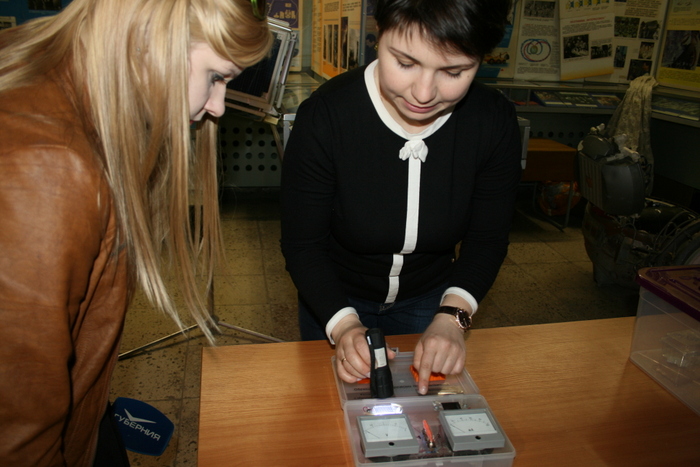Scientists at Samara University have begun a series of experiments in outer space with innovative photovoltaic cells. The final result is expected to be the creation of a new kind of solar battery for spacecraft. The batteries are expected to cost a fraction of the price of current analogs, and will allow Russia to gain independence from foreign supplies of the components presently needed to produce “space” solar batteries.
The base for the scientific experiment with the photovoltaic cells (PVC) developed at Samara University is the Aist-2D spacecraft. Aist-2D was created by university scientists and specialists from Progress (State Research and Production Rocket Space Center) and was sent in late-April into low-Earth orbit within the scope of the first launch campaign from Russia’s new Vostochny Cosmodrome.
Onboard the satellite are 14 PVC, measuring 2x3 cm each. 13 of the PVC are innovative and the last one is a control cell, produced using the industrial technologies widely available today. The experimental prototypes differ in terms of the multilayered structure of which they are comprised. In particular, each of them has its own materials in the uppermost sensitive layer, which is responsible for the conversion of sunlight – silicon carbide, zinc sulfide, fluoride dysprosium or other chemical substances. They are also differentiated by the geometry of each sensitive layer.
At present, stable communications have been established with all of the experimental-prototype solar batteries onboard the satellite. Telemetry is functioning normally, and signals are being received daily at the Progress data-acquisition center. The operational characteristics of each experimental element are consistent with those expected. That said, Progress specialists and scientists from Samara University are monitoring the satellite’s orbital positioning, temperature, and battery illumination. Having carefully analyzed the data on the prototypes’ behavior in conditions of outer space, the scientists will be able to start developing the most efficient structure of the innovative photovoltaic cells as early as 2017. “We’re going to be analyzing the data we get from orbit so as to be in a position – in just a year’s time – to draw some initial conclusions as to the optimal structure of a PVC that harnesses the full potential of all prototypes,” notes Natalia Latukhina, Associate Professor at Samara University’s Department for Radiophysics, Semiconductor Micro- and Nanoelectronics.
Moving forward, upon the conclusion of flight tests and the launch of the new technology into mass production, the innovative Russian silicon-based solar batteries will be able to be integrated into the equipping not just of satellites, but also of unmanned aircraft, electric cars, chargers for mobile phones, smart phones and computers, as well as any electronics – onboard and otherwise.
The uniqueness of the photovoltaic cells developed by scientists at Samara University lies in the fact that they are based on the use of long-familiar semiconductive materials – silicon and silicon carbide. However, laboratory tests suggest that their efficiency could be up to 30% or higher. These are precisely the parameters offered by today’s most efficient nanoheterostructural PVC based on АIIIBV compounds. That said, they are heavier than their silicon-based analogs (their specific weight can reach up to 1.9 kg/m2 versus 1.7 km/m2 for the silicon versions), today’s germanium-based multilayer nanoheterostructural PVC cost five times more than silicon-based PVC, and, according to the U.S. Geological Service, a full 9/10 of the world’s geranium reserves are located outside Russia – in the USA and China.
The basis of the high-efficiency silicon PVC created by Samara University scientists is a multilayered structure comprised of layers with nano-crystals of silicon and silicon carbide, as well as special coatings with ions of rare-Earth elements. Each layer “works” within its own band of the solar spectrum, increasing the fraction of energy absorbed within it in such a way that conversion efficiency is noticeably improved. The technology behind the fabrication of such a structure is based on the well-established technology used in the manufacture of silicon-based devices featuring low-toxicity materials (silicon, carbonium, silicon carbide) which are available in virtually unlimited supply.

 RU
RU  EN
EN  CN
CN  ES
ES 